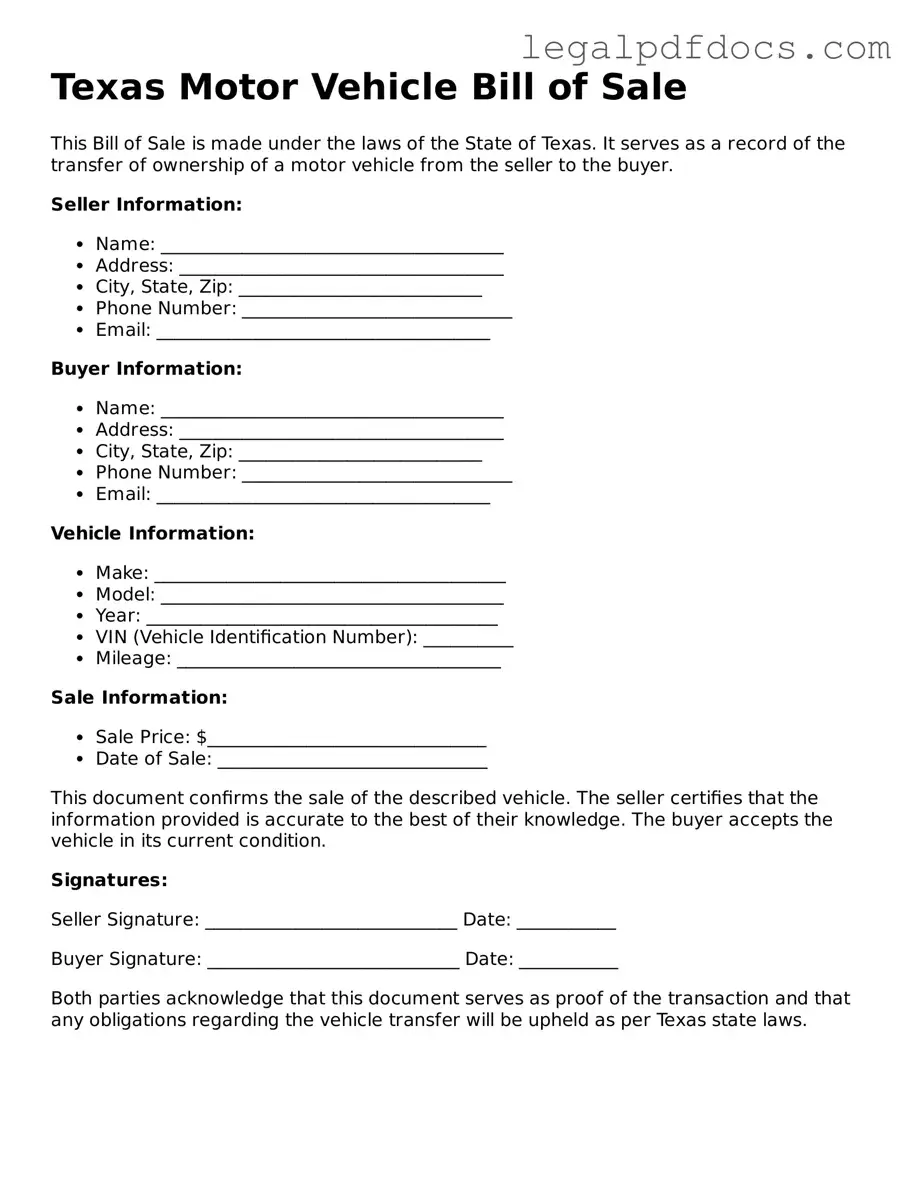Official Motor Vehicle Bill of Sale Form for Texas
The Texas Motor Vehicle Bill of Sale form is a legal document that serves as proof of the transfer of ownership of a vehicle from one party to another. This form captures essential details about the vehicle, the seller, and the buyer, ensuring that both parties have a clear record of the transaction. To facilitate a smooth transfer, it is important to fill out this form accurately; you can do so by clicking the button below.
Open Motor Vehicle Bill of Sale Editor Here
